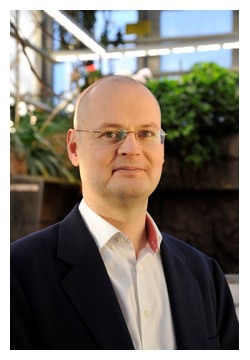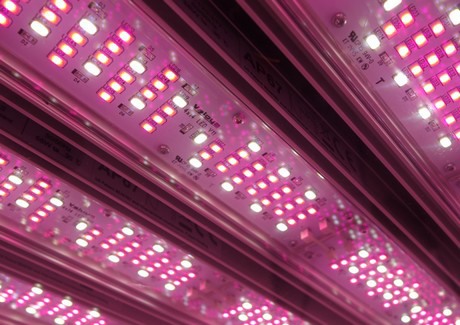Over the last couple of years, LED technology has obtained a serious position within the horticultural industry. The evolution of the lighting source was sprouted by a large number of suppliers and institutes who made huge efforts into the research and development of the alternative lighting technology. This caused an avalanche of new knowledge and experience in regards to the use of LEDs in all kinds of crops, climates and settings.
Soon it became known that LED grow lights had much more potential than just replacing conventional greenhouse lighting systems as an energy efficient alternative. They have become a lighting source that created a whole new approach to growing crops indoors in a controlled environment.
But at the same pace that the amount of knowledge on the possibilities of horticultural LED lighting increased, more suppliers of LEDs popped up in the industry. If you attend any hydroponic, greenhouse or horticultural trade show or event lately, you will see that there is plenty of choice available in LED lighting and that new companies are still founded every once in a while.
 Rabbe Ringbom, VP of Sales & Marketing at Finnish LED grow lights manufacturer Valoya, also confirms that the horticultural lighting industry has seen a revolution since the first introduction of LEDs.
Rabbe Ringbom, VP of Sales & Marketing at Finnish LED grow lights manufacturer Valoya, also confirms that the horticultural lighting industry has seen a revolution since the first introduction of LEDs.According to him, while much more is known on the possibilities of horticultural lighting, the industry should still become more aware of the fact that you can still not simply replace any traditional greenhouse lighting with LEDs.
"In practice we have seen that LEDs are installed for trials, based on decisions that had more to do with energy savings and the cost of the luminaire. More attention should be paid to the actual purpose of the light, which should place the crop and the growth on the first place."
Ringbom explained that this is the result of the price competition in the market, created by suppliers who advertise LEDs as the one and only replacement lighting source for traditional horticultural lighting. They sell dozens of boxes with LEDs, yet they often don't think about the real impact that this has on a specific crop or situation.
But don't we have these LEDs available of which we can simply adjust the spectrum, which can basically create a perfect tailored spectrum for any crop? Does that not solve the issue?
Ringbom: "Offering a lamp with an adjustable spectrum is not an answer to the question. You install LEDs with a certain purpose and the question is what kind of LED is required to achieve this goal. The answer lies in the right spectrum, but it might take a couple of years and huge amounts of investment to create such a specific spectrum."

For this reason, Valoya profiles itself as a supplier of horticultural LED grow light solutions that are developed for specific purposes. Valoya’s LED grow lights have been trialed and tested through over 400, large scale research projects. "This all was done in collaboration with some of the world’s leading universities and research institutes such as Wageningen University, LfL-Bavarian State Research Center for Agriculture and Julius Kühn-Institut."
The result of this are the 5 spectra Valoya offers to the market, each patented and designed for a specific purpose. "Before you can offer an LED solution you need to analyze the growth or process of what you want to achieve. From this step we create a solution that is not only based on a right LED solution with the right spectra to achieve this, but also created from a growth protocol point of view."
Sophisticated
Valoya does not offer any LED system that can be used for multiple purposes. The company offers different kinds of LED light sources, typically designed for a specific growth phase. "When you want to use just one and the same LED grow light spectrum to achieve different goals, you are compromising. This is something we do not want. Therefore, all of our LED solutions are designed to optimize just one of the separate steps or stages in a breeding process or growing environment."Ringbom explained that Valoya has LED grow lights available for growth stages like the vernalization, germination, vegetation and flowering. "All of these stages, depending on the crop, benefit from different spectra. We also have spectra for generic research available as well as highly accurate daylight replacement spectra."
This approach has had a major influence on the client portfolio of Valoya. Their solution driven approach has brought them many high end customers active in the crop science industry; seed companies, plant breeders, plant protection manufacturers and research institutes. Currently, 8 out of the 10 world’s largest agricultural companies are using Valoya’s LED grow lights. These companies have a scientifically driven interest in LEDs to speed up breeding processes, as the technology allows them to be independent from seasons, take out the random factors and speed up the expensive breeding processes.
Ringbom; "Thanks to the LED grow lights with the right spectra, they can breed and grow crops continuously and faster; without sunlight, being no longer limited to a season. Also in combination with the advanced daylight simulator that we developed, called LightDNA, breeders can record outside light conditions and simulate climates and any geographical lighting condition in a closed environment. This allows them to speed up their very expensive breeding programs significantly. In this way LEDs can help them for example to develop a new variety in seven years instead of ten years. Those three years have a big monetary impact."
Valoya's LightDNA also allows breeders to cut the costs of their global activities; when a variety or crop is bred for production in a specific region, for example corn for a dry African climate or a cabbage for production in Southeast Asia, the breeder can simulate these climates and light conditions at any place in the world. "Thanks to LEDs and LightDNA they no longer need to have research and satellite breeding activities all over the world."
Breeders are also interested in the possibilities of LEDs to alter the plant's morphology. "Whatever they want to do, whether it is changing the far red ratio for early flowering or something completely different, LEDs give them a possibility to make crops grow more efficiently. The industry is no longer stuck with fluorescent or high pressure sodium lamps, but now has the freedom to change the spectra and reach certain targets with more complicated, but more dedicated and more advanced opportunities."

Vertical Farming and Pharmaceutical Crops
But it's not just the high tech researchers and breeders who rely on Valoya's sophisticated LED grow light technology. The manufacturer also has a range of products available that is dedicated to vertical farming and pharmaceutical industries. These two relatively new industries have also seen major growth lately, and the success of many companies greatly depends on the use of LEDs in their growth process. Ringbom explained that Valoya approaches these two industries in the same way they do with their crop science customers. The only difference is that the crops in vertical and pharmaceutical farming are more common.
"For many of these crops we have proven solutions available that work, including extensive growth protocols and cultivation strategies. Yet, it is always very important to know the specific requirements from the grower.
"One grower might be selling his basil at a certain length, because the supermarket demands tall and large crops. Another grower might want to produce more biomass and keep his crops more compact. These are two different situations that each require a different LED solution, while it is the same crop. A simple example that there is not just one spectrum that solves a problem. Therefore, it is very important to know the target of the grower, and from there we can provide a growth protocol and LED solution that will help him to achieve this."
 For more information:
For more information:Valoya
T: +358-10-2350300
[email protected]
www.valoya.com










